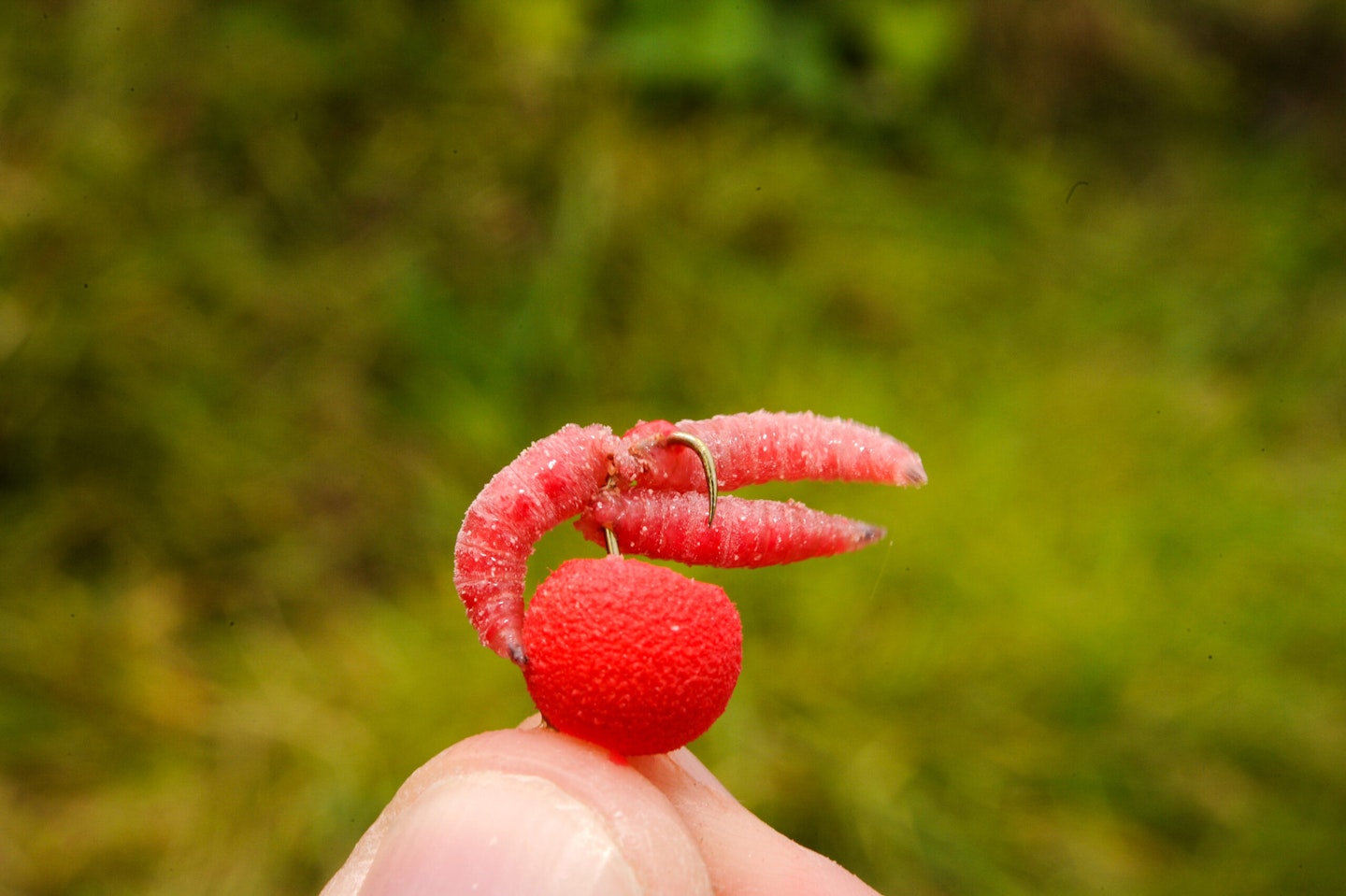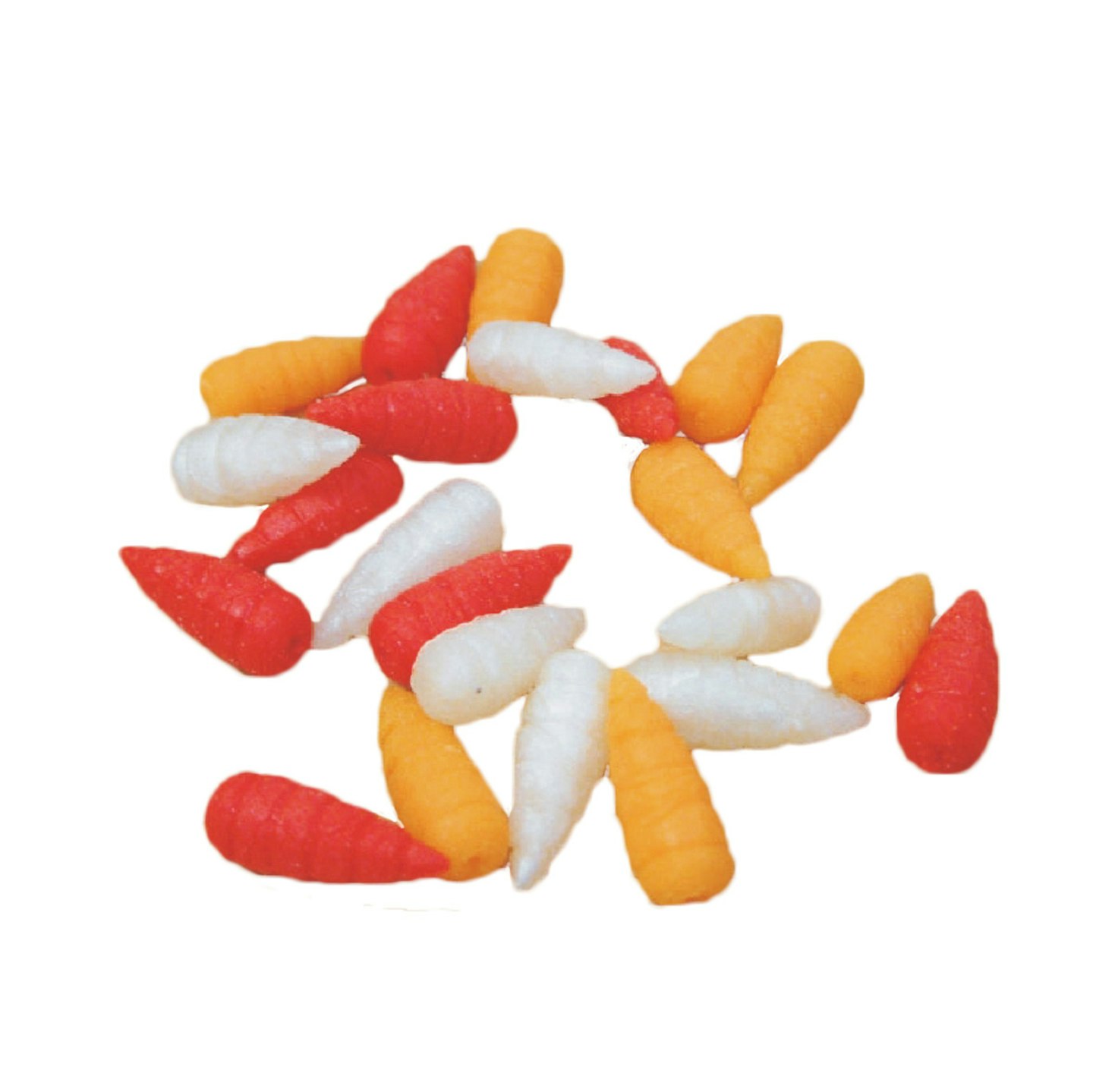If you thought maggots were a bait for small fish such as roach and perch, think again! Carp love them too. When you’re struggling for bites on other baits, a switch to these tantalising natural offerings can rapidly turn a blank trip into a memorable winter carp fishing session.
Some anglers are put off by the price of maggots, especially if they plan to use them in large quantities. But in reality a gallon of maggots won’t cost you much more than a kilo of good-quality boilies. And even if you only take a pint or two, there are plenty of ways to increase your chances of bites by only using a small amount of maggots. Any you have left over at the end of the session can be frozen until next time.
Maggots mostly consist of water, so there’s no risk of them filling a carp up before they find your hookbait, which is a huge advantage at this time of year when the feeding windows can be really short. In this article we look at some of the best ways to incorporate these super grubs into your carp fishing...
GET ALL THE TACKLE YOU NEED FOR CARP FISHING BY TAKING A LOOK AT OUR DETAILED BUYER'S GUIDES TO RODS, REELS, ALARMS, BIVVIES, BEDCHAIRS AND MORE.

Add some loosefeed
How much you feed is largely determined by the stock of the lake you’re fishing. On a well-stocked water you could start with 10 medium Spombs of maggots and then top up with a couple more after each fish, or if you feel you should have had a bite but nothing’s materialised. It’s amazing how a little loosefeed falling through the water can trigger a reaction.
CARP CAN BE CAUGHT ON A WIDE RANGE OF BAITS, OUR GUIDE TO THE BEST BAITS FOR CARP FISHING HIGHLIGHTS SOME GREAT ALTERNATIVES.

Feed balls of sticky mag
This is a technique originally used in match fishing to feed maggots at long range and help them fall quickly through the water. First, clean the maggots, then sprinkle Horlicks powder over them. Next, add a tiny bit of water that binds them together in dense balls that can be catapulted or thrown out. They’ll remain intact until they reach the bottom, creating a tight area of bait.
USING ONE OF THE BEST FISHING CATAPULTS WILL HELP YOU BE ACCURATE WITH YOUR FEEDING.

A maggot topper
The addition of a few maggots instantly makes a standard pop-up boilie hookbait more attractive to a passing carp. A quick way to attach them is to tie a size 14 hook onto your hair before threading on your pop-up. Then simply thread on three or four maggots and pull the hook down into the bait to secure them in place.

Coated maggots
Maggots are attractive in their own right, but you can make them even more irresistible with additional flavours. A good way to do this is to give them a quick dunk in a liquid glug before dropping them into your chosen powder. Tackle shop products such as krill powder work well, but don’t be afraid to think outside the box and try things such as Angel Delight from the supermarket. Dip the maggots into the dry powder just before you cast out.
UTILISING THE BEST LIQUIDS AND ADDITIVES CAN GIVE YOU AN EDGE THAT CAN PUT MORE CARP IN YOUR NET!

Become a feeder flinger
Regularly recasting a large maggot feeder accurately to the same spot will gradually build up a bed of feed in your swim. Fish it in conjunction with a short hooklink as you would when fishing a Method feeder for an excellent bolt effect. To slow down the release of the maggots from the feeder, cover up some of the holes with electrical tape.
USING A FEEDER CAN BE A GREAT WAY TO CATCH CARP, CHECK OUT OUR BUYER'S GUIDE TO THE BEST FEEDER RODS.

Pinpoint the carp's location
A good strategy when fishing with maggots in winter is to start by casting small golf ball-sized PVA bags of maggots to various spots. Fish with fairly tight lines that will register any line bites, and keep an eye on the water for any signs of fish. If you’ve had zero indications after 45 minutes, recast to a new spot.
Once you start getting indications and work out where the fish are, move all your rods into the area as tightly as possible. Feeding spells are often short during the winter and, by fishing like this, if you catch one fish, there’s every chance of getting a second bite shortly after.
YOUR MAINLINE CAN GIVE YOU A LOT OF INFORMATION ABOUT ACTIVITY IN YOUR SWIM, OUR GUIDEWILL MAKE SURE YOU'RE USING THE RIGHT ONE.

Advantages of faking it
The main plus point of plastic maggots is that they’re 100 per cent nuisance fish-proof, so you can rest assured that you’ll always have a baited rig in the water which won’t be destroyed by small ravenous perch or roach. They can also withstand long casts and help camouflage your hooks, and the buoyant versions allow you to create a range of popped-up or critically-balanced hookbait presentations.
Artificial maggots (and casters) are available in a whole host of colours, so don’t be afraid to experiment with these.

Maggot zigs
It’s no secret that zig rigs can be a devastating tactic for targeting winter carp as they sit in the warmest layer in the water column. If you don’t fancy fishing with just a piece of plain foam on your zig rig, you can increase its attractiveness by gluing two or three maggots to the foam or trapping a couple in the band of a zig-aligner. This allows you to experiment with different colour combinations, as well as adding a bit of movement to the hookbait.
CARP FISHING IN WINTER CAN BE TOUGH, THIS EXPERT ARTICLE ON WINTER CARP FISHING WILL HELP YOU ADAPT TO THE CONDITIONS.

The mag-aligner
A line-aligner presentation uses a piece of shrink tubing over the eye of the hook to help the hook flip over in a carp’s mouth when it picks up the bait, putting it in a position where it’s more likely to penetrate and catch hold. The mag-aligner uses a fake maggot to achieve this effect, while also helping to break up the outline of the hook. You simply add two maggots to the hookpoint to complete this deadly-efficient rig.
The set-up works best when presented over a tight group of grubs fed by a PVA mesh bag or feeder. Once the carp are feeding they will hoover up this rig because it blends in with the rest of the maggots.

PVA bag perfection
Maggots can be fished in both solid and mesh PVA bags. This is the perfect way to deliver a compact pile of loosefeed right next to your hookbait. When filling a bag with maggots, make sure you use mesh that has really small holes so that they can’t escape prematurely.
To attach your bag, it’s best to tie a long tag end when securing the bag with an overhand knot, and nick this on to your hook. If you hook your rig into the side of the bag you could accidentally pierce one of the maggots, which will then cause your bag to melt.
FIND THE BEST VENUES FOR CARP FISHING NEAR YOU IN THIS WHERE TO FISH GUIDE.

Big bunches
It doesn’t get any simpler than a big bunch of maggots fished on a simple blow-back rig. Yet loads of carp fall victim to this set-up every winter, with the colour and movement of the bait often too much for even a lethargic carp to resist.
Thread 15-20 maggots on to a length of bait floss with a needle and tie them into a tight ball. As an added bonus, nuisance fish will find this dense bait hard to deal with too.
Hide the hook
For many years the accepted wisdom was that it was essential to scale down your end tackle if you wanted to stand any chance of catching a carp between November and March. But times have changed, and some of the country’s most prolific carp haulers have proved that there’s often no need to start digging out packets of small hooks. When a carp picks up something like a size 6 hook there’s every chance it will go in and stay in, as it’s far less likely to be ejected than a smaller hook.
To help disguise the hook, tip a slow-sinking piece of fake corn with six or seven maggots. Once this settles on the lakebed, the hook will be flat with the bait wafting over the top, making it impossible for the carp to spot the trap.
This page is a free example of the amazing content Angling Times Members get every single week. Becoming an Angling Times Member gives you access to award-winning magazine content, member rewards, our back issue archives, bonus content and more! Join our fishing community and find out more today!
